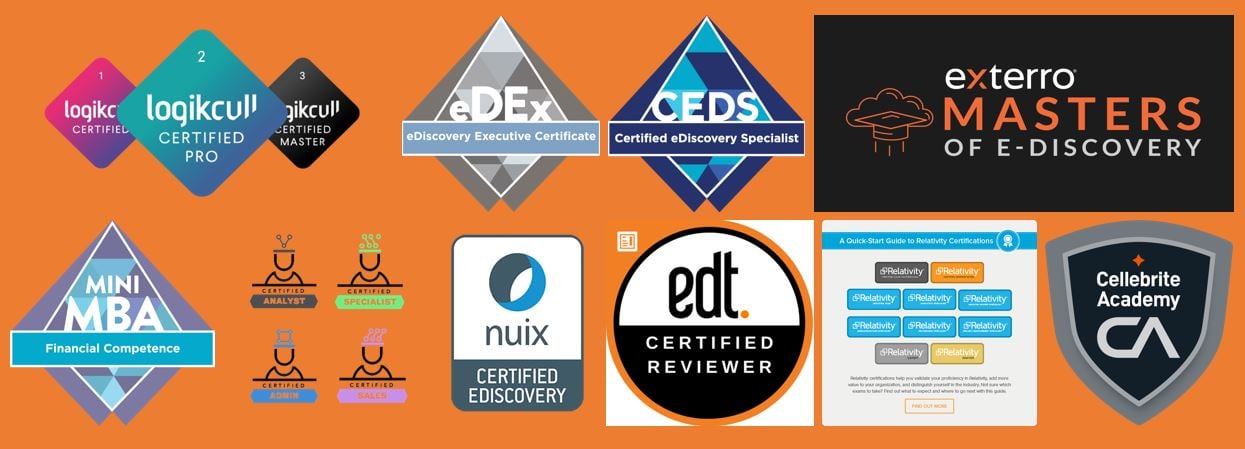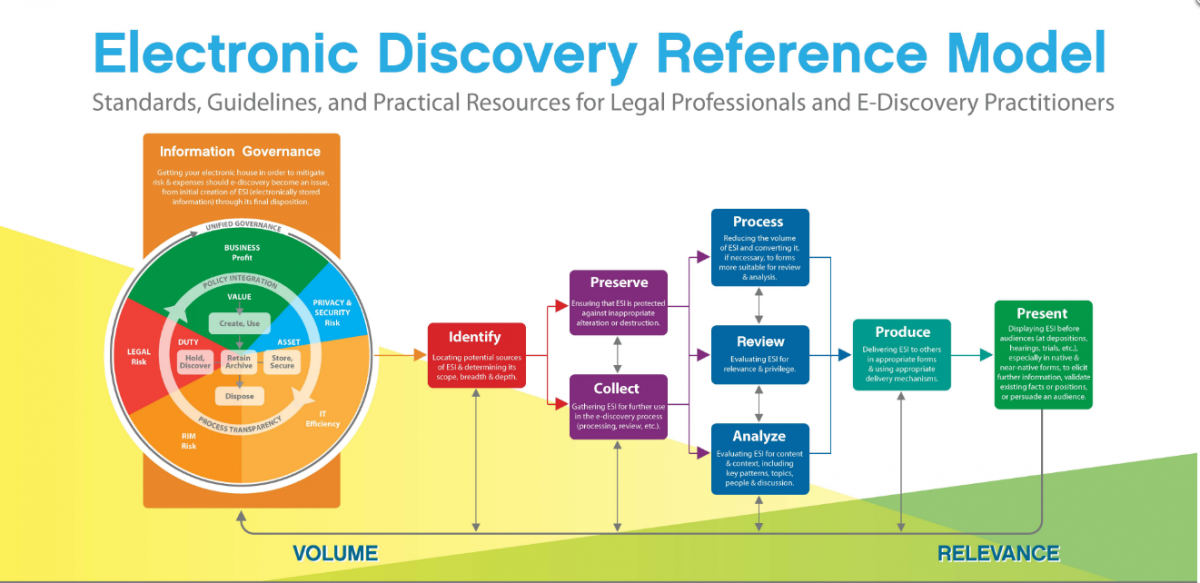Like email is an electronic version of the ancient concept of paper mail, eDiscovery is simply the concept of discovery applied in the age of electronic data.
At its core, eDiscovery is the process by which information is deemed to be relevant or protected by attorney-client privilege. It is commonly used in the context of litigation, regulatory investigations, internal investigations, journalistic inquiries, M&A due diligence, data breach response, and more.
eDiscovery enables people to uncover facts, construct timelines, identify trends and relationships, and ultimately discover the truth.
It is simultaneously:
- Ubiquitous (e.g. utilized in essentially every of complex commercial litigation and white collar criminal investigations)
- Niche (probably fewer than 2 million people globally work exclusively in eDiscovery)
- Fundamental (litigation cannot proceed and investigations cannot conclude without a firm understanding of relevant facts and timelines)
- Misunderstood (the technical nature of dealing with hardware and software is a completely different animal than the paper stored in filing cabinets decades ago)

Umbrella terms like "litigation" and "investigations" get thrown around a lot, but the fact is, eDiscovery has an extensive application, with a non-exhaustive list including:
- Labor and employment (ageism, sexual harassment)
- Complex commercial litigation (product liability, health and safety)
- Regulatory investigations (CFPB, SEC, DOJ, EPA)
Electronic Discovery Reference Model
The Electronic Discovery Reference Model (EDRM) is the foundational conceptual model to help you visualize what is taking place during the course of eDiscovery. The process is laid out as linear, though it's often iterative in practice. For example, reviewing documents may turn up new information that sends you back to collect more information from custodians that weren't previously identified.
The left side of the EDRM is information governance - that is, managing Electronically Stored Information (ESI). An ESI data map is helpful during eDiscovery because it facilitates a quick response to an inquiry. A well-constructed and maintained data map will reveal what information an organization keeps, where it is stored, who has access to it, how long it's preserved, etc.
The important concepts of eDiscovery, or the important elements of the eDiscovery process, are :
- Information Governance: proactively manage ESI so that businesses are only retaining data that has business, regulatory, or compliance value
- Identification: where does relevant data reside and who has access to it?
- Preservation: ensuring data is not lost or destroyed (whether through document destruction policies or through malicious intentions to hide evidence)
- Collection: making a copy of data (traditionally completed physically for legacy, on-prem, and device-specific data; remote collection enabled by cloud-hosted data)
- Processing: converting disparate data types so that the files can be reviewed
- Review: examining data to determine relevance or privilege
- Hosting: maintain ESI in a secure environment (traditionally done on-prem; more and more cloud-native options are available)
- Production: sending copies of relevant, non-privileged data to relevant parties (litigators, investigators, etc.); may be native or non-native
- Presentation: e.g., during trial
eDiscovery software
eDiscovery software was a major birthplace of the "legaltech" space. Specifically because of the ubiquity of discovery (fundamental to every piece of litigation) and the expense associated with it (billable hours, hosting electronic data, etc.), technology innovators dove into the eDiscovery space. They built point solutions that addressed every phase of the EDRM, though document review platforms get most of the attention.
Depending on the size and complexity of the case matter, incredibly powerful enterprise software may be best suited to the task, or a more self-serve tool may suffice. (You can read our post about eDiscovery software for small law firms.)
Examples of common legal tech aligned with the EDRM include:
- Information Governance: Onna, Aware
- Processing: Nuix
- Document review: Relativity, Everlaw
Further, there is a cottage industry of legaltech curators. Some of these solutions are online directories (e.g. Legaltech Hub), while others have various business models built around them (e.g. Reynen Court and LexFusion).
Ultimately, technology is like an Indy car: sometimes pretty, always powerful, but completely useless if you don't know how to use it. That gives rise to the next step to be aware of: eDiscovery certification.
eDiscovery certification
Most entry-level eDiscovery jobs do not require any specific certification, but they are an effective way to rise through the ranks, command a higher salary, and demonstrate one's competence to coworkers, vendors, recruiters, and others.

Industry associations such as ACEDS offer a variety of certifications, as do eDiscovery software providers like Relativity, Brainspace, DISCO, and more.
While certificates are not necessary for success in this industry, oftentimes, successful people acquire the knowledge anyway. For example, someone may have used Relativity for a full decade, know it like the back of their hand, and not have a Relativity Certified Administrator (RCA) - even though they are as proficient as one. Many eDiscovery professionals find that their employers are happy to pay for certifications or reimburse them once the designation is achieved.
Increasingly, people who work in the eDiscovery services and consulting spaces are obtaining adjacent certifications, especially privacy-focused certificates such as the Certified Information Privacy Professional (CIPP), Certified Information Security Systems Professional (CISSP), and the Certified Information Privacy Manager (CIPM).
Regardless of the context, if you need eDiscovery assistance, let me know. We can help. Want to read more? Subscribe to our blog.




